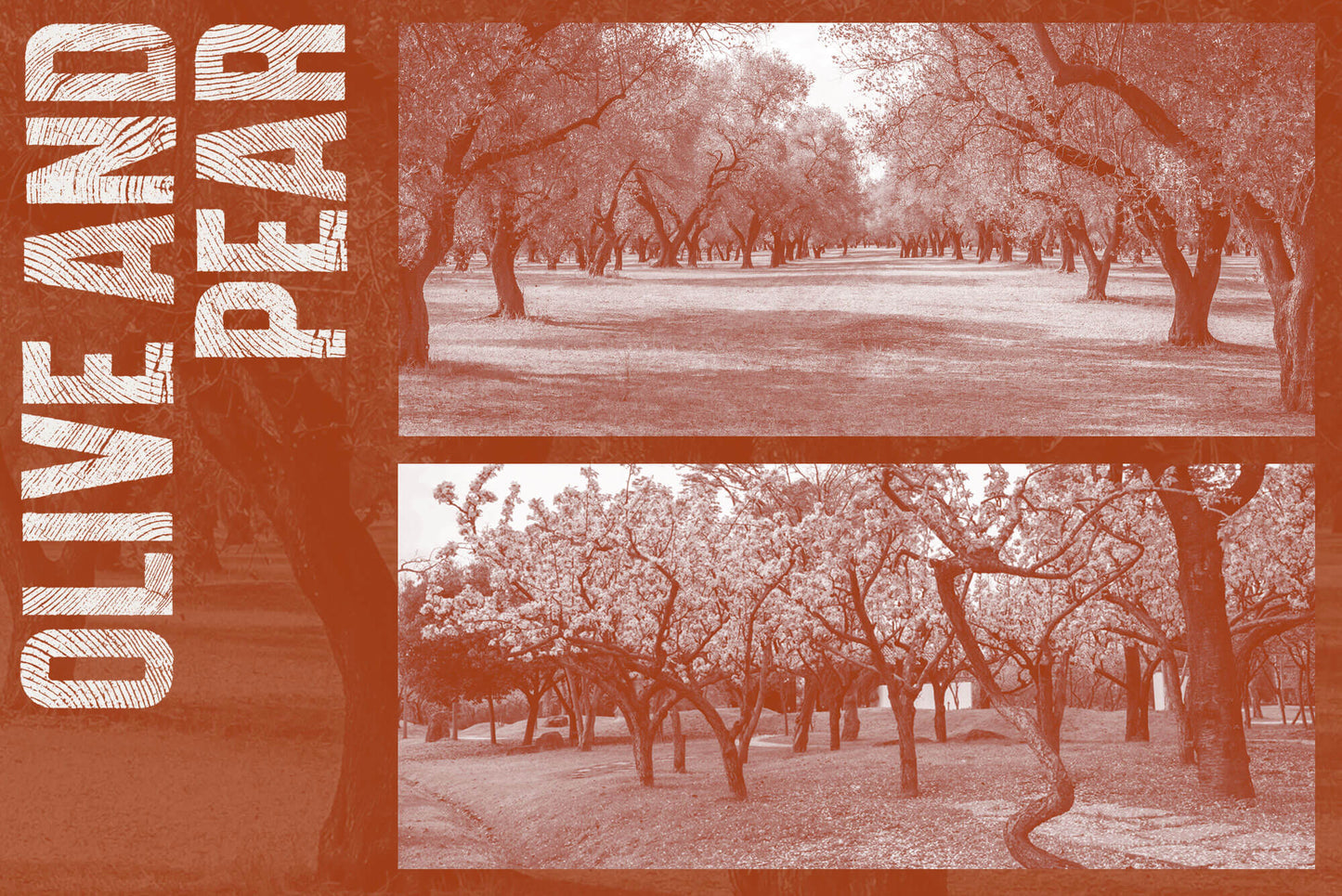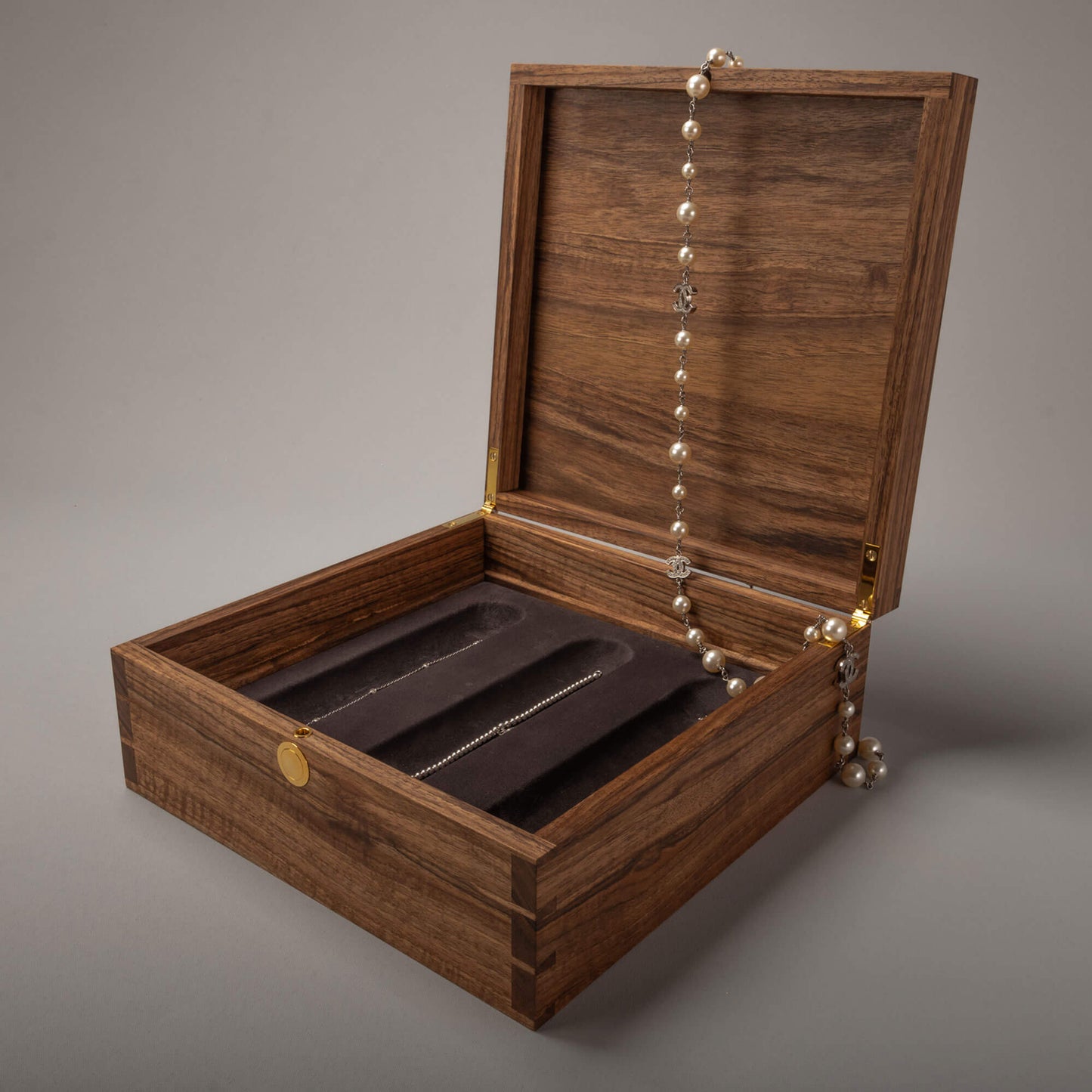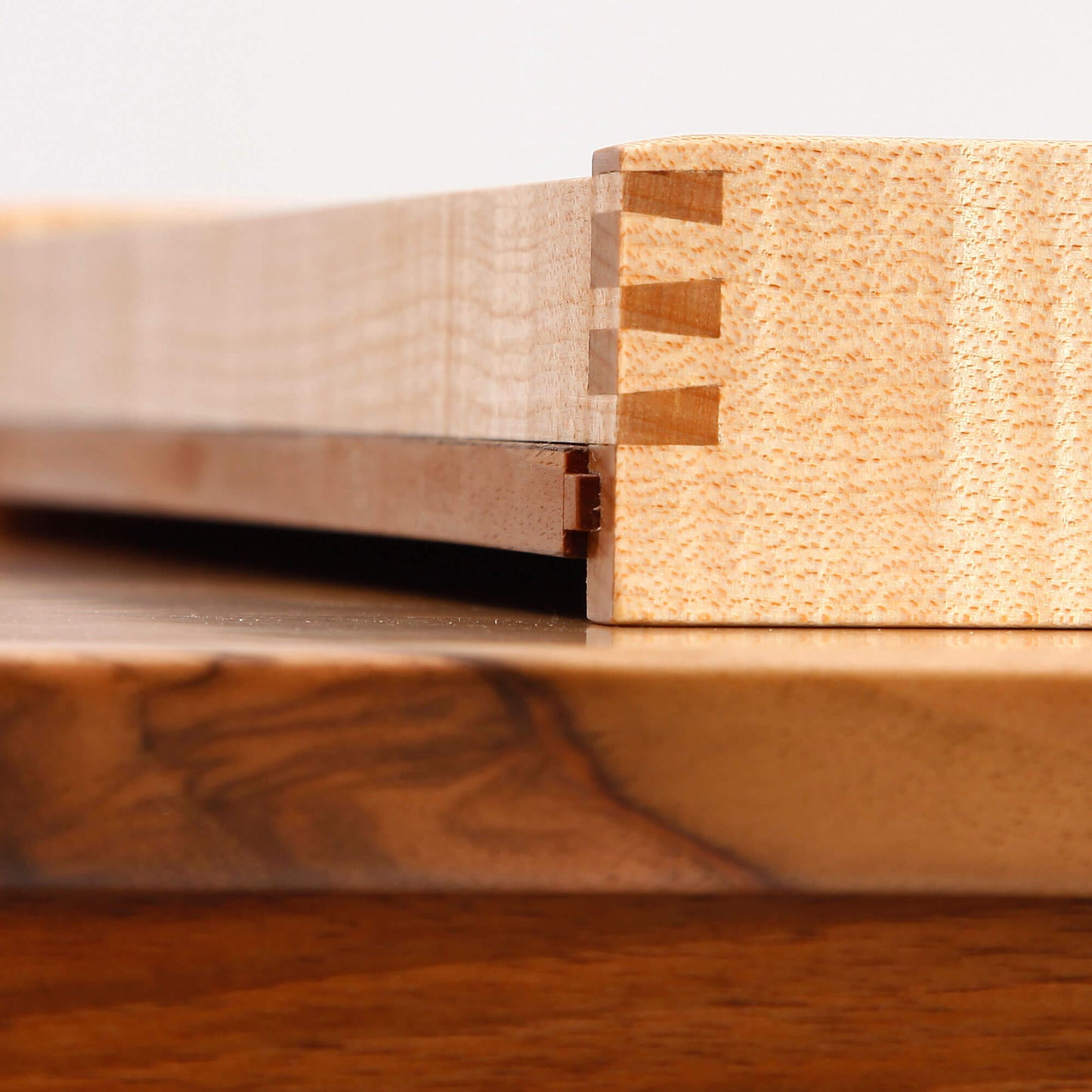
Wood is not only a renewable material but also a significant carbon sink, capturing and storing carbon throughout its lifespan. By sharing an appreciation for wood culture, we can support biodiversity and promote responsible forestry. This entire process forms a sustainable cycle that benefits both people and the planet. The next two wood species I’d like to explore in depth are Olive and Pear.
Olive
I find the wild grain and mix of colours in Olive wood enchanting. It’s sometimes a challenge to make it fit comfortably into a larger collection of other woods as it stands out, and wants to be the star of the show! I first read about Olive wood through the Krenov School of Fine Woodworking, I was inspired to use it in a Wall Cabinet, my final project at Williams & Cleal Furniture School. I had the opportunity to see some in all its glory on a visit to Tylers Timber Yard, when visiting with Justin Williams from Williams & Cleal. We discussed at length the challenges — you can loose almost 60% of the wood due to checking and knots. This is also clear from the fact it grows in such a wild and arid climate, and the trees are kept to 3-6m high for production and picking.

Its shape and difficult nature reflect the way I like to work — on the edge and challenged at every step! I love how the top of the Rossbeigh Table (images shown below), when jointed, has a wild stormy sea of grain running in all directions and is rock solid in its feel and texture. It reflects how I feel about the sea and coastline of Rossbeigh, constantly being reshaped year-on-year and yet so unique and permanent at the same time.

Olive wood is a showstopper! Known for its creamy-golden colour with dark brown or black swirls, it instantly draws attention with a dramatic, almost marbled effect. Its fine, dense texture makes it ideal for smaller decorative items, where the bold grain patterns can really shine. Olive wood can be a bit tricky to work with because it’s hard and dense, so careful handling is essential to prevent chipping. But the payoff? A smooth, glossy finish that feels just as good as it looks. Adding to its charm, it has a mild, pleasant scent while being worked on — like an extra gift for the senses.

This wood has deep roots in Mediterranean history, where it’s been cherished for centuries in both religious and decorative objects, symbolising peace and endurance.
Religious Artifacts: Olive wood’s spiritual legacy is rich, especially in the Middle East. In places like Bethlehem, artisans have long used it to make religious artifacts like crosses and Nativity scenes, carrying forward a traditional craft.
Ancient Greek and Roman Items: Olive wood also holds a place in ancient artifacts, prized by Greek and Roman civilisations for its strength and symbolism. Today, it’s a favourite for items that bring a touch of Mediterranean charm.
Handcrafted Kitchenware: Olive wood’s natural antibacterial properties make it a top pick for premium kitchen utensils, from cutting boards to spoons. Its beautiful grain and practicality have earned it a spot in kitchens worldwide.

Pear
I was introduced to Pear while on a visit to my friend Bernard’s workshop and woodyard in Chamonix. While the conversation was minimal due to my beginners level of French, communication was clear about its texture and quality. He has several bundles of Pear purchased a few years ago for an investment and he very kindly parted with two cubic metres of live edge boards for me. I also managed to get some locally while in Argentière over the summer for carving and it was here I realised its full potential.

If there’s one word for Pear wood, it’s ‘elegant’. With subtle shades that range from light pink to reddish-brown, Pear wood brings a warm, understated beauty to any project. The fine, smooth grain has a natural satiny finish that feels classy but not over-the-top, making it perfect for smaller, intricate pieces where craftsmanship shines.
Working with Pear wood is a true pleasure. It carves easily, allowing for detailed, precise designs that really show off the wood’s smoothness. Once sanded and polished, Pear wood achieves a soft, high-gloss look that’s simply gorgeous. It’s moderately hard but less durable than some other hardwoods, so it’s best suited for decorative or lighter-use pieces. Because larger pieces of Pear wood are rare, it can be a bit pricey, but the quality justifies it.
Pear wood has a longstanding reputation in Europe for small, intricate carvings and delicate furniture components.
Historic Woodcuts: Pear wood was a go-to during the Renaissance for woodcuts and woodblock printing, thanks to its fine grain that captures detail beautifully. The renowned artist Albrecht Dürer used Pear wood for some of his intricate woodblocks.
Antique Scientific Instruments: Pear wood’s precision made it ideal for instruments like compasses and sextants, and it’s still a preferred wood for luthiers creating pegs and fingerboards for high-end string instruments.
Pear Tree, Hilda Doolittle 1886-1961
Silver dust
lifted from the earth,
higher than my arms reach,
you have mounted.
O silver,
higher than my arms reach
you front us with great mass;
no flower ever opened
so staunch a white leaf,
no flower ever parted silver
from such rare silver;
O white Pear,
your flower-tufts,
thick on the branch,
bring summer and ripe fruits
in their purple hearts.

